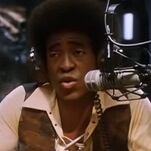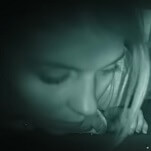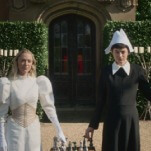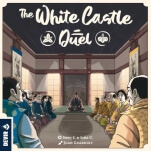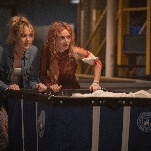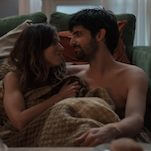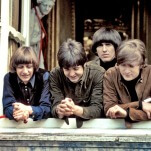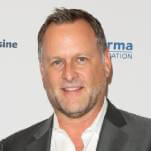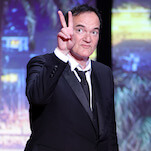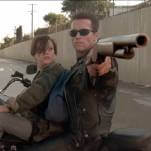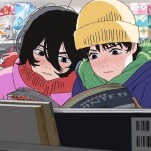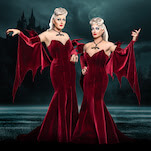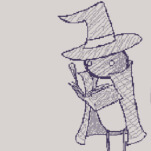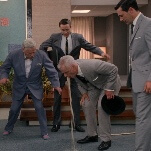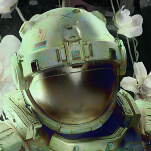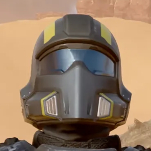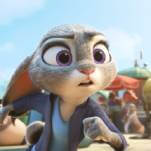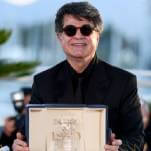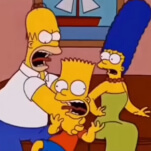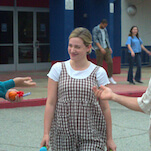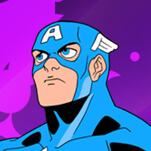Wonder Woman Annual #1 is a surprisingly superb way to introduce fans of the film to Diana in comics
Contrary to what people might think, the recent boom of comic book movies and television shows hasn’t come with a corollary increase in people buying comics. The industry is enjoying a relative resurgence overall, but sales don’t map the characters and franchises that are showing up on screens. The problem certainly isn’t helped by the habit at both DC and Marvel to ignore what’s on the shelves to potential new readers coming in from theaters, but Wonder Woman may have bucked that trend. With Wonder Woman Day on June 3, just a day after the movie’s release, DC put out two Diana-centric one-shot titles on the previous Wednesday, a great way to rope in new audiences who’ve fallen in love with the Amazonian warrior.
In Wonder Woman Annual #1 (DC), four very different teams deliver a lot of story for a double-sized issue. The powerhouse team of Greg Rucka and Nicola Scott tell the story of how Batman and Superman met Diana for the first time, made complete by colors by from Romulo Fajardo Jr. Rucka does an incredible job of balancing the three distinct personalities, showing in just 10 short pages the strength that they will come to rely on as their relationship grows and matures into respect and affection. Particularly in contrast to Batman’s skepticism and Clark’s faith, Diana’s joy shines off the page, captured perfectly in Scott’s strong, powerful lines.
The second story focuses far more on Diana’s sense of right and wrong, protecting a villain wrongly convicted of a crime from the men who want to destroy him. Written by Vita Ayala, a member of DC’s New Talent Showcase class, with art by Batgirl and Bird Of Prey’s Claire Roe and colors by the indomitable Jordie Bellaire, it’s darker both in tone and visually than the first, but for good reason. Roe draws a strong, stern Diana, packed with muscle and righteous fury. Michael Moreci and Stephanie Hans of Angela: Queen Of Hel fame switch themes yet again, showing Diana as both merciful and caring with a story that’s moving in its intimacy and the sacrifice she makes for a friend. Writers Collin Kelly and Jackson Lanzing are up last, with a story that feels straight out of Pacific Rim, with Diana fighting a rampaging kaiju. Artist David Lafuente and colorist John Rauch bring Diana back to a bright, poppy style that’s fluid and a little cartoony for a story that’s all about humility and humanity and being kind to those who are frightened.
There isn’t a better way to introduce readers to Wonder Woman than a single issue that shows her just as nuanced and heroic as she’s meant to be, by turns vengeful and gentle. All four stories show a different side of a character that often represents the best of what humans have to offer the world, even if she’s not technically one of their own. The strength of this book makes it a must read for long-time fans and new readers alike, especially those still riding high on the movie.
[Caitlin Rosberg]
Marvel’s first solo title starring a gay character should be a bigger deal than Iceman #1
Iceman #1 (Marvel) arrives burdened with immense expectations. It’s not just that Bobby Drake has never had an ongoing solo book before—although that is true. Most X-Men work better as ensemble players, and this is especially true of Stan Lee and Jack Kirby’s original team. Iceman, Beast, Angel, Cyclops, and Marvel Girl are such well-defined characters in the context of the group that every attempt to carve out space away for any of them on their own has invariably fallen short.
So why Iceman, in 2017? Bobby had his profile raised in the last couple years due to the revelation that he was gay—a revelation that was shocking only inasmuch as it wasn’t particularly shocking. The character had a long history of unsatisfactory romances, with no partner ever sticking around very long. The reveal was made possible thanks to time-travel shenanigans which saw younger versions of the original five X-Men brought to the present to coexist with their contemporary doppelgängers. Contemporary Bobby gets along with younger Bobby just fine, and the issue even opens with the former training the latter—don’t think about it too much or you’ll get a headache.
The problem is that the book should be a bigger deal than it is. This is Marvel’s first ongoing series starring a gay lead character, written by openly queer writer Sina Grace, being launched during Pride Month. But for better or for worse Iceman #1 has been left to sink or swim on its own merits, which—given that this is a Marvel comic in 2017—means the series will be under-ordered, will struggle to find purchase in the direct market, and probably won’t last long. To survive in this very hostile retail climate, it’s not enough that a new book be good, it has to be fantastic—and while Grace’s story hits its marks well enough, its ambitions are too modest to leave much of an impact. Alessandro Vitti’s art is competent but at times has issues: spatial relations between characters get wonky sometimes, and the sketchy look is completely miscast. This is a talky book that will live or die on its ability to communicate quiet moments, and Vitti struggles.
The book does everything a first issue is supposed to do: introduces the main character and possible members of his supporting cast while also laying the groundwork for future conflict and direction for the series. In this instance, Bobby’s supporting cast is the rest of the X-Men, including his younger self, and his parents. The main conflicts aren’t physical. There’s a pro-forma tussle with an anti-mutant Purifier—easy work for someone who’s been superheroing since he was a tween. More importantly, the issue is framed around Bobby filling out a dating app questionnaire while also dealing with parents who barely tolerate his mutant status and remain (for the moment) ignorant about his sexuality. It’s a low-key book, probably too much for its own good.
Representation is awesome, and with all the hits Marvel has taken lately on the subject it could have used a win here. Iceman #1 certainly isn’t a bad book by any means but it’s slight, and even if there is an enthusiastic audience for more queer rep in superhero comics it’s probably not enough to make this humble book the success it needs to be to survive. Just ask Bobby: it’s a cold world.
[Tegan O'Neil]
If Found…Please Return To Elise Gravel is a drawing guide for children and adults alike
Drawn & Quarterly has had a lot of success publishing the sketchbooks of renowned cartoonist like Anders Nilsen and Lisa Hanawalt, showcasing how artists exercise their imagination and craft when not working on larger projects. If Found…Please Return To Elise Gravel (Drawn & Quarterly) differs from past sketchbooks in that it spotlights a cartoonist whose target audience is children, and Elise Gravel’s work in this book is very playful and silly in hopes that it will inspire young artists to have similar fun with their creations. Gravel’s goal is to get kids to stop worrying about right vs. wrong and just start drawing, but that’s also a valuable message for adult artists that want to achieve a more liberated state of mind when crafting ideas and putting them on the page.
This isn’t an explicitly educational text, but it does offer guidance by showing different examples of how artists can activate their imaginations. The majority of Gravel’s sketches are riffs on a wide variety of themes like “Weird Garden,” “Grumpy Things,” and “Bunnies Dressed In Punk, Rock, And Heavy Metal T-Shirts,” and these guidelines provide a base for her to build on with her drawings. There are a lot of fantastic creatures throughout this book, and every so often there will be a design that inspires Gravel to delve into the creature’s backstory, which is typically as goofy as the drawing.
At one point Gravel breaks down how to draw a hedgehog in four simple steps, and many of her drawings can be easily replicated because they’re built around various combinations of basic geometric shapes and different colors. Readers who aren’t too precious about maintaining the original state of their book can doodle in the blank spaces on the page, and paper stock is thick enough that it can withstand being drawn on. When she writes about how the imaginary friends of her youth have evolved into the cartoon creatures she draws as an adult, she offers her “friends” to any readers that need one to get started. Creating something from nothing can be daunting, and Gravel wants readers to know that they can use her plethora of ideas as the launchpad for their own art.
Gravel picked her best sketches for this book, and while there’s a page with her “ugly” art, it would have been nice to have more of these inadequate drawings sprinkled throughout. It’s understandable why she would want to focus on her strongest work, but when so much of the message involves pushing forward even when you’re not satisfied, some extra pages of lesser sketches would help strengthen this idea.
[Oliver Sava]
Revenger Vol. 2: Revenger + The Fog gleefully embraces vulgarity
On the inside front cover of Revenger Vol. 2: Revenger + The Fog (Bergen Street Press) is a black-and-white reproduction of the cover to the first issue of Revenger + The Fog, the miniseries collected in this volume. The illustration features the title character, Revenger, out of breath and dripping with sweat. Author Charles Forsman has liberally applied the ink, rendering wanton shadows as thick brush strokes. The whole thing has a lovely texture to it, and it perfectly captures the extremity of Forsman’s cartooning, the very thing that makes this series so worthwhile.
To continue a thread begun with this website’s review of Curb Stomp: The recent trend to appropriate “trash” culture—lurid horror films, pulp novels, sleazy anime—often produces lifeless work. These failures merely appropriate a look; they cherry pick and anesthetize a handful of signifiers of trashiness, but they fail to embrace the spectacle of trash. The failures lack the willingness to stumble and to be ugly or crude or corny. Forsman, however, understands that you cannot appropriate trashiness without getting dirty, and he gleefully embraces the vulgarity of the milieu.
Revenger places a black woman in the Charles Bronson/Death Wish role, and it sees her traveling across the country committing outrageous acts of violence in defense of innocents. Revenger + The Fog serves as a prequel series, and here Revenger cleans up Southern California with the help of other vigilantes. The bulk of the narrative is driven by the pedophiliac father of Jenny, Revenger’s girlfriend, trying to re-capture his daughter, and it has an incredible body count. The story is simple and straightforward, though the characters are afforded a certain pathos, which Forsman is careful to handle with just the right mix of subtlety and melodrama.
But the real draw remains Forsman’s cartooning. Some panels are plagued with oddly drawn heads or hands or feet or faces, but it’s easy to overlook these quirks when faced with a page draped in a deep shade of purple. Forsman, wittingly or not, recognizes that the power of trash lies in its functioning as an object of pure spectacle—a swirl of hypnotic colors, or an accidental striking image, or rendering blood with an interesting texture—and he reproduces this quality in his own work. The whole thing is composed of bodies in motions, close-ups of eyes, spurts of blood, and garish, loud colors. In one sequence, Forsman rapidly cuts back and forth between close-ups of Revenger and Jenny’s stupefied eyes, and there remains a particular satisfaction in that combination of speed, sincerity, and silence. Rather than abstracting the spectacle of trashiness, Forsman reifies it, making it visceral and palpable.
Like other trash cultural artifacts, however, Revenger problematizes itself. Here those problematics are racial ones, and there is much to unpack with how Forsman draws Revenger: as hyper-masculine and bestial with exaggerated facial features. It’s a rendering which could be mitigated, but its problematics are highlighted by the dearth of other black bodies. Here is where Revenger truly embodies the trash spirit; it offers a compelling and sensational experience, but one whose enjoyment has to be qualified and conditioned.
[Shea Hennum]



